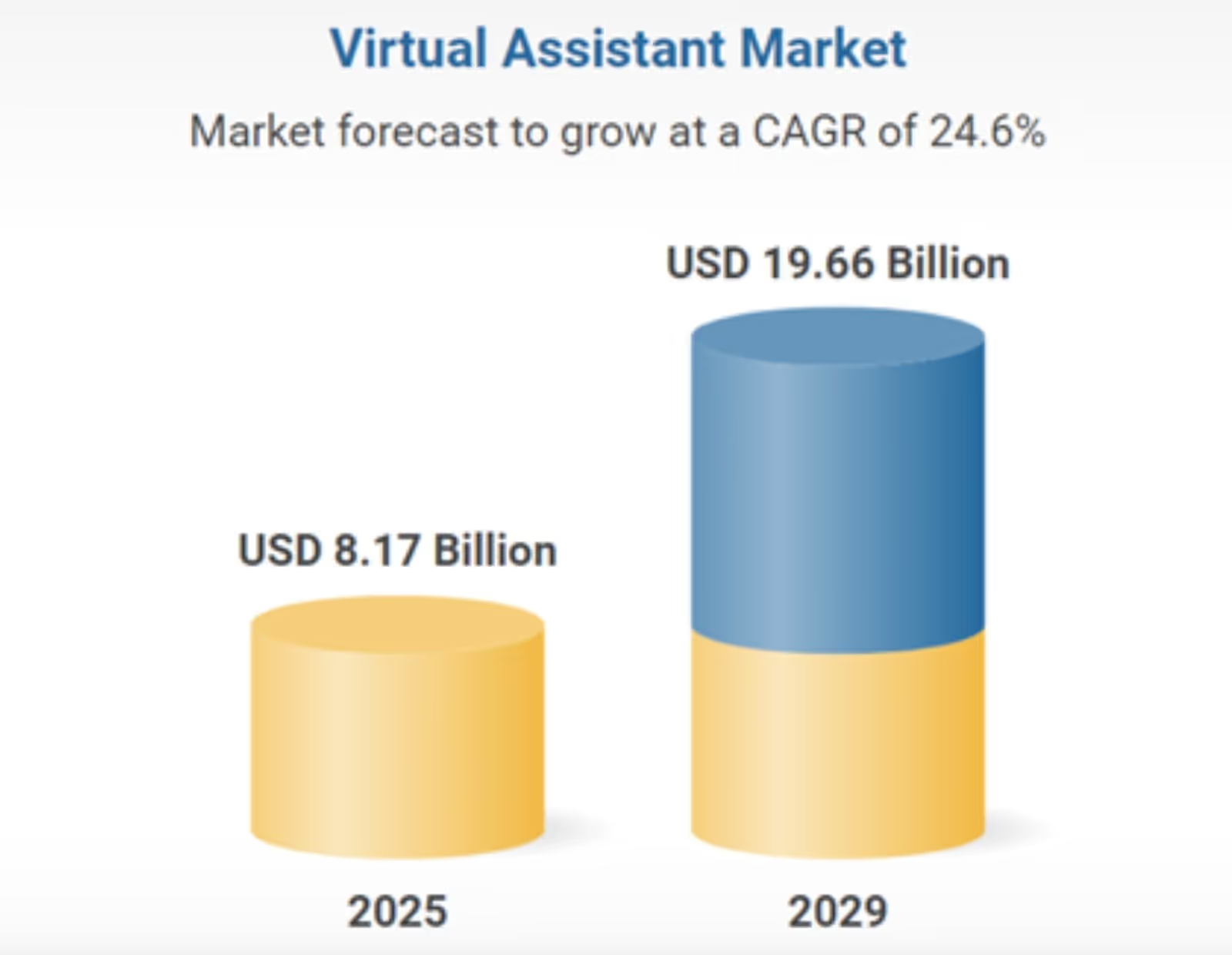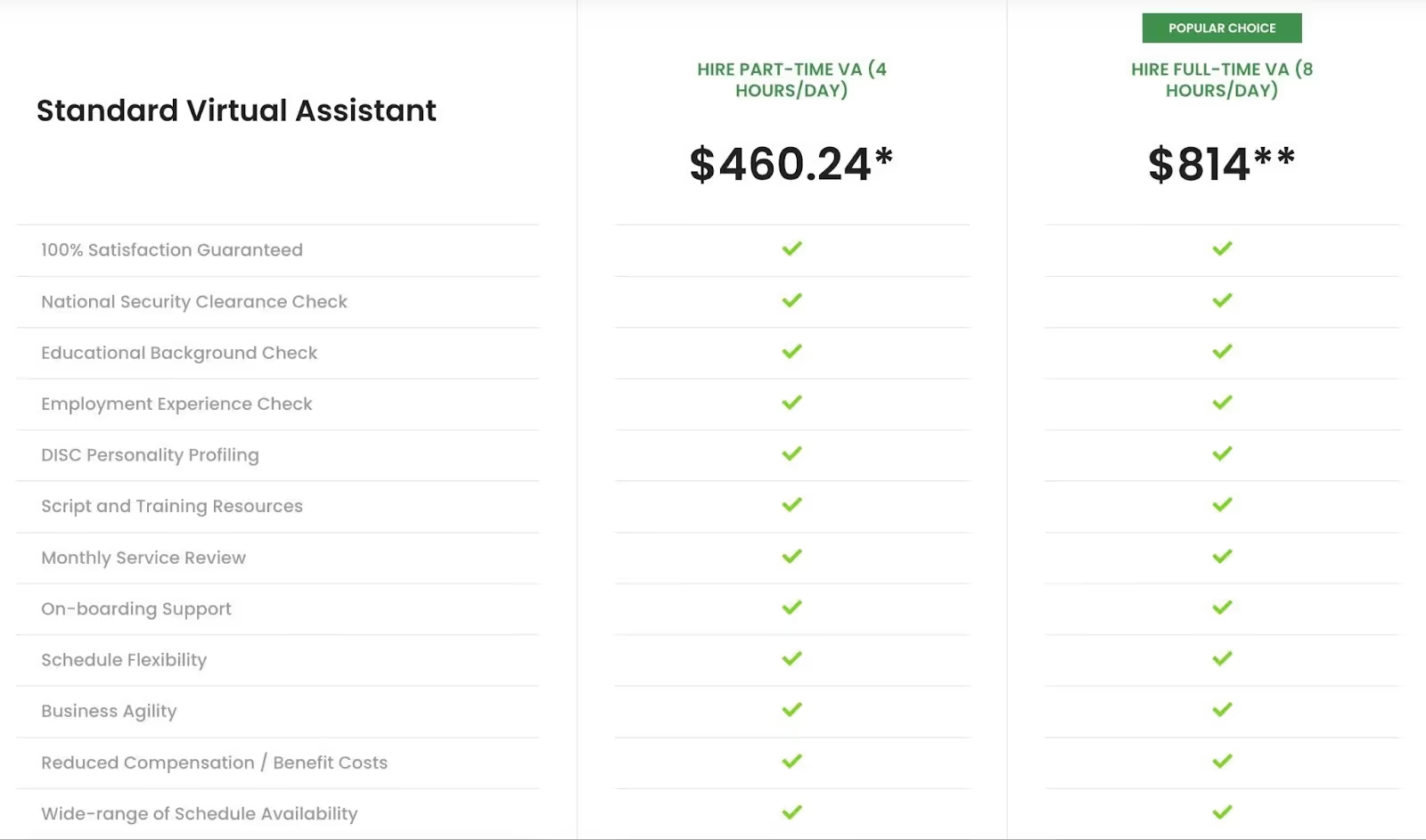Thinking about earning from home without upfront investment? Virtual assistant business can be a sure way to make profits, especially when everything has gone digital. It’s a low-cost business that can help you earn a steady income.
If you run or serve POD shops, offering VA help is an easy way to add income. It only requires you to use your existing store skills. So, it’s a great side hustle.
VAs earn about $27/hour on average, which can amount to ~$30K - $50K a year with steady work.
This post shows you the eight clear steps to start. You’ll also get tips, tools, and more.
What Is a Virtual Assistant Business?
A virtual assistant business is a service-based venture where you offer remote admin, creative, or technical help to clients. You run it from home and bill by the hour, project, or retainer.
Common services you may offer as part of your virtual assistant business include:
- Administrative support
- Creative work related to content and social media
- Operational support
One advantage of starting a virtual assistant business is working remotely. Low startup cost and flexible schedules let you grow quickly.
Remote tools make communication simple and let you take on clients anywhere. Many entrepreneurs, POD business owners, consultants, and busy executives hire virtual assistants to scale their work without extra overhead.
Also Read:
Why Start a Virtual Assistant Business: Benefits and Market Demand
More companies now prefer flexible teams that mix full-time staff with contractors. That provides an opportunity for the VA business model.
Let’s discuss why you should start a virtual assistant business.
Growing Market Demand
More companies now hire people who work from home. This makes a virtual assistant business a smart choice.
Companies are also outsourcing many tasks to save money and stay on budget.
The global outsourcing services market was about $3.8 trillion in 2024.
The virtual assistant market grew from about $6.37 billion in 2024 to $8.17 billion in 2025. It’s expected to reach $19.66 billion by 2029.

This shows a massive demand for virtual assistant services. So, if you’re planning to start a remote assistant business, now’s the time.
Key Benefits
A virtual assistant business is a low cost business you can start with just a laptop and a few tools.
Small businesses and POD sellers often need help managing their businesses. They run a tight shop with no inventory and avoid hiring staff. So, you’ll get many opportunities to sell your virtual assistant services.
If you run a print-on-demand business, it can be a way to earn a side income.
Here are some other benefits:
- Location independence
- No formal qualifications needed
- Flexible working hours
- Multiple income streams
- Scalability potential to scale your business.
- Low startup costs
Most importantly, a freelance business like this can deliver high ROI. If you bill $30 an hour for 12 hours a week, that’s about $1,440 a month. This will let you recover your startup costs in a couple of months.
Also Read:
8 Steps to Start Your Virtual Assistant Business
Ready to turn your skills into a real business? These eight steps will show you how to launch your virtual assistant business, find clients, and start earning from home.
1. Choose Your Niche and Service Offerings
The first step toward starting a virtual assistant business is choosing a niche or specialization. Don’t try to do everything, as that reduces your value.
Choosing a niche lets clients know exactly what you’re great at. It could be that’s admin work, social media, or helping with online print-on-demand or dropshipping stores.
Here are some areas where you can specialize.
- Admin support & management with tools like Asana
- Social media management like Instagram posting
- Customer service
- Bookkeeping and data entry with QuickBooks
- Ecommerce help for those selling on Etsy or Shopify
- POD store management
- Content creation and scheduling with tools like Trello
Whatever it is, use that to define your virtual assistant services. Your virtual assistant rates will also depend on your niche.
2. Create a Simple Business Plan
Every successful virtual assistant business starts with a simple plan. It doesn’t have to be long. Even one page helps you stay clear about what you’re building.
Your plan can include:
- Mission Statement: Example: “I provide reliable virtual assistant services to help small businesses stay productive.”
- Target Market: Who you want to help, like Etsy store owners or ecommerce sellers
- Service Offerings: The tasks you’ll handle
- Pricing Structure: Set your rates or packages
- Marketing Strategy: How you’ll find clients online
- Financial Projections: Monthly income goals and startup costs
Here’s a free template you can use to create a simple business plan.

3. Choose Your Business Structure and Register
Choosing your business structure early makes running your virtual assistant business smoother later. Most people pick between a sole proprietorship and an LLC for their work-from-home business.
Here’s a quick comparison to help you choose.
Start as a sole proprietor if you’re testing your idea. Move to an LLC once you get regular clients or want liability protection.
Each region has different laws for registering small businesses. So, consult with a lawyer to register your VA business.
You may need a DBA if you use a name other than your business name. This allows you to use a more catchy name for branding.
You should also consult an accountant to plan your taxes and keep your records clean.
4. Determine Your Pricing Strategy
Setting the right price for your virtual assistant business helps you attract steady clients. Here’s a comparison of three common pricing models you can choose from.
New VAs can start hourly and move to retainers once they find regular clients. Experienced VAs often mix retainers and projects for flexibility.
Rates also differ by region. A VA in India or the Philippines may charge less than one in the US or the UK. Use a pricing calculator to find a rate that feels fair and sustainable.
Here’s an example from a virtual assistant business in the US.

5. Set Up Your Online Presence
A polished online presence builds trust faster than any sales pitch. Instead of relying only on freelance sites, invest time in your own website.
Your website should include:
- A “Services” page that clearly lists what you offer
- An about/bio page that tells your story
- Your portfolio with the work you’ve done for clients
- Reviews and testimonials from happy clients
- A Contact form so potential clients can reach you
Here’s an example.

A professional online store can open doors fast. You can create your site on Wix, WordPress, or Shopify, without any coding.
Next, make sure your LinkedIn profile shows your skills clearly.
Use the same colors and friendly tone on every platform. It makes your personal assistant business feel trustworthy and real.
6. Establish Payment and Invoicing Systems
Before you start taking clients, figure out how you’ll get paid.
PayPal and Stripe are popular options among freelancers. They’re quick to set up and easy to use. You can, of course, opt for direct bank transfers as well.
If you find work using sites like Upwork, they’ll handle payments for you.
When you start working with your own clients, tools like FreshBooks or Wave make invoicing a breeze. Keep your payment terms short and clear.
Always put things in writing. Every project should have a signed contract that lists your rates and timelines. And yes, track every transaction. Future-you will thank you during tax season.
7. Build Credibility with Testimonials
Ask your happy clients for testimonials to build reputation. Or offer your first few clients discounted work in return for honest feedback.
Once you collect testimonials, use them everywhere. It could be on your LinkedIn, your portfolio site, and in your pitches.
Turn one success story into a quick case study with results and takeaways.
8. Find Your First Clients
There’s no single way to find clients — the key is trying a mix of strategies.
You can begin on freelance sites like Upwork, Fiverr, or Freelancer, though rates may start low. Treat it as a training ground before you move toward direct clients.
Don’t ignore your personal network either. Tell friends, ex-colleagues, and LinkedIn contacts that you’re offering virtual assistant services.
Join Facebook and LinkedIn groups where small business owners or creators hang out.
You can also try direct outreach via email. Here’s a template to help you out.
Subject: Can I help you save time on admin work?
Hi [Name],
Running a POD or ecommerce store comes with tons of tiny tasks. It could be product uploads, order tracking, messages, and more.
I help business owners like you manage these smoothly so you can focus on sales and creativity.
Would you like me to send a quick breakdown of my offers?
Thanks,
[Your Name]
Virtual Assistant
Finally, build authority for steady visibility that helps you move from gig-based work to long-term clients.
Also Read:
How Much Does It Cost to Start a Virtual Assistant Business?
You don’t need a huge budget to launch a virtual assistant business. Here’s what typical startup costs include:
If you already own a laptop and an accounting tool, you can start this as a side-hustle for under $500.
Most VAs recover their startup costs with their first few clients. This makes starting a virtual assistant business one of the lowest-risk online business ideas.
Tools and Software Every Virtual Assistant Needs
When you’re setting up your virtual assistant business, the right tools make a huge difference. You don’t need to buy everything right away, as most tools have great free plans to start with.
Final Thoughts: Is a Virtual Assistant Business Right for You?
This business is ideal for someone who stays calm under pressure and loves checklists. Income often starts small and grows as you gather reviews and steady clients.
Key success habits: clear messages, on-time delivery, and realistic promises.
Begin with one paid client and refine your processes before taking on more. Scaling comes from better systems, referrals, and higher-value services.
So, what are you waiting for? Start your personal assistant business today and if you’re looking for some added passive income or accessories to build rapport with clients, get started with Podbase.


.avif)






